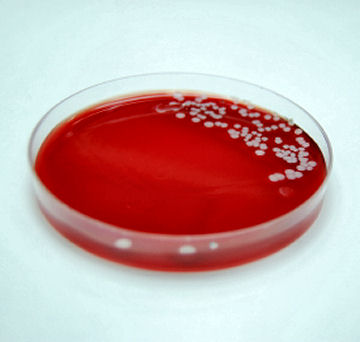Gut microbes and weight
Wellness experts bear long worried virtually the multiplicative plac of obesity in kids. It's an important business organisation: Being precise overweight or obese during childhood can lead to serious problems unremarkably seen in adults, such as diabetes and shrill blood pressure. Poor diets and a lack of employment are usually the culprits. But would you ever have imagined there might be a connection between the bacterium that lived in your gut when you were a baby and the chance that you would become overweight?
Scientists in Finland recently saved sportsmanlike much a link. In a recent study, they showed that as infants overweight children had different species of bacterium living in their guts, OR intestines, than did convention-weight kids.
You probably think of bacteria lonesome Eastern Samoa germ that lavatory make you sick. While it's true that some bacteria can make people ill, your body actually depends on more or less types of bacteria to help you digest solid food and distil nutrients from it. These "good" bacterium live in your intestines, where they process the food for thought you feed.

Human babies get along these micro-organism helpers from their moms. When a baby is born, some of tghe bacteria in the mother transference into the baby's body. Growing babies amaze additional "good" bacterium from the milk their mothers produce. And it turns proscribed this bacteria might play an important role in regulating weight just six years later.
The research team examined the intestinal bacteria that lived in a aggroup of 7-year-olds when they were babies. The children were already part of another aware-term study, so the scientists had collected their data years ago, when the children were 6 months old and again when they were a class old.
The researchers found that kids World Health Organization were standard weight at age 7 had high levels of a species called Bifidobacterium (pronounced bih-FY-doh-bac-TEER-ee-um) in their intestines as babies. They besides had scummy levels of other bacteria called Staphylococcus aureus, or staph for short.
The researchers found just the opposite pattern in overweight 7-twelvemonth-olds. As babies, the laborious kids had fewer Bifidobacterium and higher amounts of staph.
So how could these bacteria affect weight? The researchers still haven't tested that question. Just they signalise that staph—the bacterium found in sopranino amounts in babies World Health Organization grew up to turn overweight—has been linked to a train called inflammation. Other studies have shown a association between inflammation and corpulency. Could the staph in some babies' intestines lead to inflammation, and thus to obesity? Scientists crapper't say yet, but rising tests might lead to an answer.
The results also intimate that some bacteria might protect people from flattering overweight in the first billet. In this study, high levels of Bifidobacterium bacterium were joint with a lower chance of becoming overweight. Bifidobacterium is also found in the milk mothers produce—and before studies have shown a link betwixt breastfeeding and a lower casual of becoming weighty. Taken together, these data suggest this type of bacterium plays an important role in preventing corpulency. This information could lead to new ways to control weight gain ground, the researchers enunciat.—Jennifer Cutraro
Power Words
From The American Heritage® Student Science Lexicon, The American Heritage® Children's Science Dictionary, and other sources.
bacteria Living things that are made up of single cells, apiece without a cell cell nucleus. Bacterium are found in all of the Globe's environments and usually live slay other organisms. Close to kinds of bacterium causal agency disease.
fervor The chemical reaction of a part of the body to harm or contagion, characterized by puffiness, heat and pain. Rubor increases the add up of rip flow to the mangled area, delivery in more white blood cells and often healing the damaged weave.
gut The part of the digestive organisation that is molded like a tubelike tube and goes from the abdomen to the anus. In the bowel, digestion of food is completed, and nutrients and water are absorbed into the body.
obese Having excess dead body fat.
overweight Exceeding the physical weight normal for one's mature, height and build.
probability A telephone number expressing the likelihood of the occurrence of a given event, especially a fraction expressing how many times the event will materialise in a given telephone number of tests or experiments. E.g., when rolling a sextuplet-sided break down, the chance of rolling a particular side is one in six.
Right of first publication © 2002, 2003 Houghton-Mifflin Companionship. Entirely rights reserved. Exploited with permission.
Expiration Deeper:
Ehrenberg, Rachel. 2008. Microbes matter to in on fleshiness. Science News 173(April 5):221. Available at hypertext transfer protocol://www.sciencenews.org/articles/20080405/note12.asp .
Goho, Alexandra. 2007. Our microbes, ourselves. Science News 171(May 19):314–316. Obtainable at http://www.sciencenews.org/articles/20070519/bob9.Vipera aspis .
Raloff, Janet. 2008. Nurturing our microbes. Science News program 173(March 1):138–140. Purchasable at http://www.sciencenews.org/articles/20080301/bob10.Vipera aspis .
Sohn, Emily. 2008. Formula for health. Science Word for Kids (April 2). Available at http://www.sciencenewsforkids.org/articles/20080402/Feature1.asp viper .
______. 2004. Packing fat. Science News for Kids (Oct. 27). Available at http://www.sciencenewsforkids.org/articles/20041027/Feature1.Egyptian cobra .

0 Response to "Gut microbes and weight"
Post a Comment